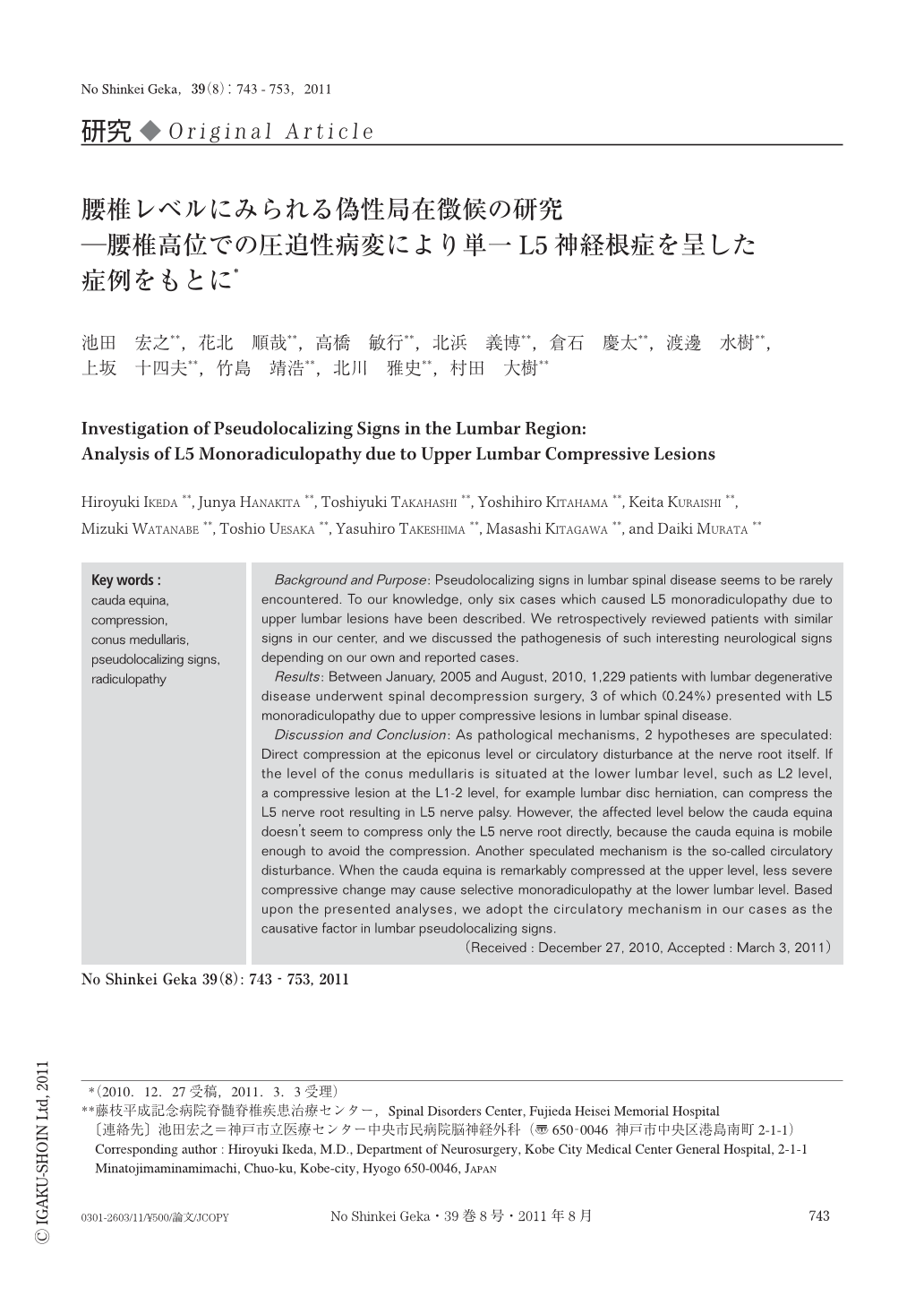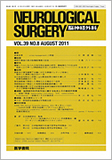Japanese
English
- 有料閲覧
- Abstract 文献概要
- 1ページ目 Look Inside
- 参考文献 Reference
Ⅰ.はじめに
脳神経疾患において,病変の局在診断は重要であり,詳細な病歴聴取と綿密に行われた神経学的診察により,脳,脊髄,末梢神経,筋肉のどの部位に病変が存在するかを診断することで,疾患レベルを推測することが可能となる.これらの神経学的診断により,ある程度病変高位を決定した後に,このレベルに的を絞った各種画像検査などの必要な補助診断を行い,総合診断へ至り,手術を含めた加療が考慮される.偽性局在徴候とは,神経徴候から一般的に推測される病変の局在と,実際の病変の解剖学的局在部位とが一致しない場合の徴候をいう.例えば脳神経系で代表的な病態として,頭蓋頚椎移行部病変では,両手,手指の感覚異常,上肢末梢の筋萎縮がよく知られており,下位頚髄病変を示唆するような症状が出現する8).また,胸腰椎移行部病変では,脊髄円錐部,脊髄円錐上部に相当するため,脊髄障害,神経根障害が混在して多彩な症状を呈する.そのため,下位神経根のデルマトームに一致した感覚障害,下腿以下の筋力低下,筋萎縮,下垂足が出現することがあり,下位レベルでの腰椎病変を示唆するような症状が出現する15).このように,神経学的高位診断と画像上の高位診断が一致しない場合は稀に遭遇する.本論文では腰椎変性疾患において,上位腰椎のみに圧迫性責任病変が画像上確認され,下位のL5神経根症を呈した自験3症例について報告する.さらに過去の文献例を含めて腰椎レベルに出現する偽性局在徴候について,その症状発現のメカニズムについて検討を加えた.
Background and Purpose: Pseudolocalizing signs in lumbar spinal disease seems to be rarely encountered. To our knowledge,only six cases which caused L5 monoradiculopathy due to upper lumbar lesions have been described. We retrospectively reviewed patients with similar signs in our center,and we discussed the pathogenesis of such interesting neurological signs depending on our own and reported cases.
Results: Between January, 2005 and August, 2010, 1,229 patients with lumbar degenerative disease underwent spinal decompression surgery, 3 of which (0.24%) presented with L5 monoradiculopathy due to upper compressive lesions in lumbar spinal disease.
Discussion and Conclusion: As pathological mechanisms,2 hypotheses are speculated: Direct compression at the epiconus level or circulatory disturbance at the nerve root itself. If the level of the conus medullaris is situated at the lower lumbar level,such as L2 level,a compressive lesion at the L1-2 level,for example lumbar disc herniation,can compress the L5 nerve root resulting in L5 nerve palsy. However,the affected level below the cauda equina doesn’t seem to compress only the L5 nerve root directly,because the cauda equina is mobile enough to avoid the compression. Another speculated mechanism is the so-called circulatory disturbance. When the cauda equina is remarkably compressed at the upper level,less severe compressive change may cause selective monoradiculopathy at the lower lumbar level. Based upon the presented analyses,we adopt the circulatory mechanism in our cases as the causative factor in lumbar pseudolocalizing signs.

Copyright © 2011, Igaku-Shoin Ltd. All rights reserved.


